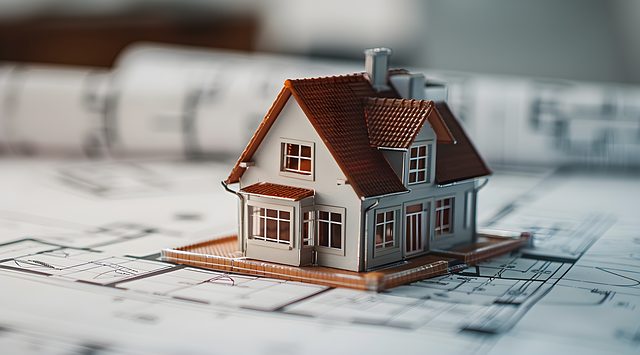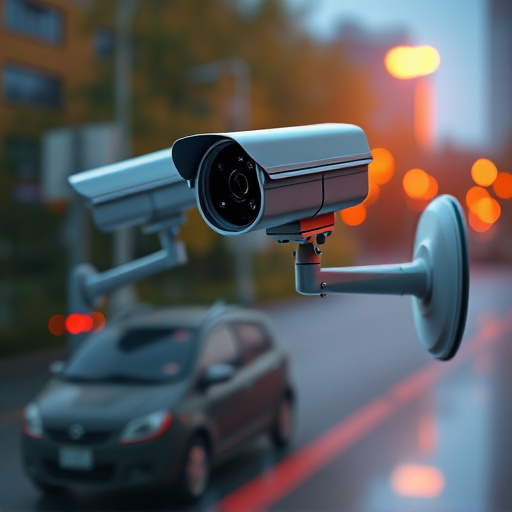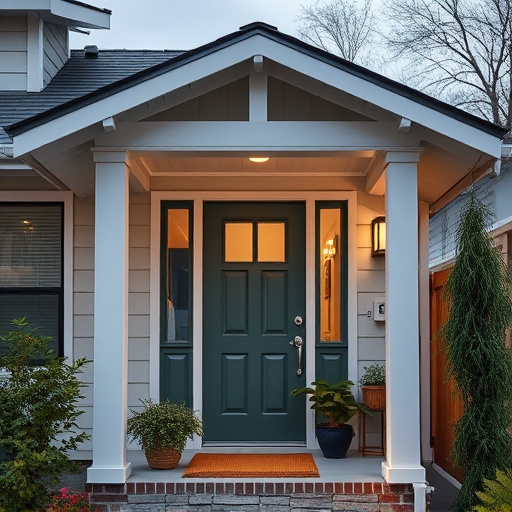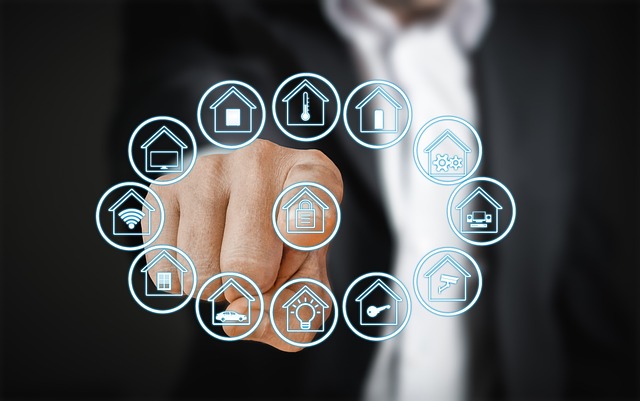Smart home devices have transformed home safety with integrated systems offering control and peace of mind. A beginner's guide recommends starting with motion sensors, door contacts, AI-equipped cameras for people/vehicle recognition, smart locks for remote access, and smart smoke/carbon monoxide detectors. These devices create a comprehensive network enhancing local and remote home security. Balancing convenience and privacy is crucial, securing devices with strong passwords and updates to mitigate hacking risks. Newcomers can start with essential components like secure door locks and motion sensors, integrating them with a comprehensive security system for enhanced defenses.
In today’s digital era, smart home devices offer unparalleled opportunities for enhancing home safety and security. This comprehensive guide is designed as a beginners’ manual to navigating the world of smart home safety technology. We’ll walk you through understanding essential smart home devices, setting up an effective system, exploring popular options, and implementing robust privacy measures. By the end, you’ll be equipped with the knowledge to harness the power of smart devices for proactive protection.
- Understanding Smart Home Devices for Safety
- Setting Up Your Smart Home Safety System
- Popular Smart Home Safety Devices Explained
- Enhancing Privacy and Security Measures
- Tips for Effective Smart Home Protection for Beginners
Understanding Smart Home Devices for Safety
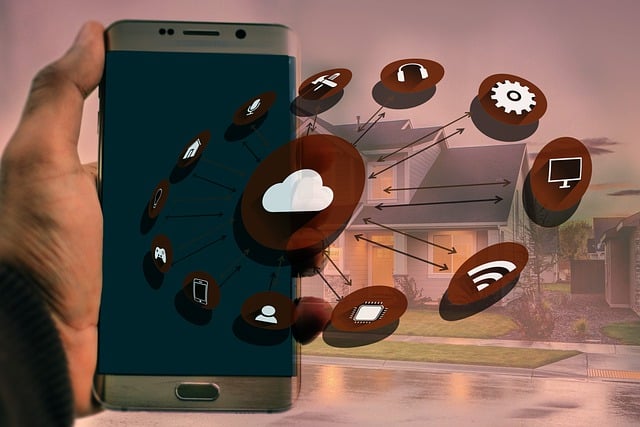
Smart home devices have transformed how we approach home safety, offering a level of control and peace of mind like never before. For beginners looking to enhance their home’s protection, understanding these technologies is key. Smart home security systems are designed to integrate various components, such as sensors, cameras, door locks, and alarms, all controlled through a central app on your smartphone or tablet. This connected ecosystem allows you to monitor your home remotely, set automated routines, and receive instant alerts when suspicious activities occur.
A beginners guide to smart safety suggests starting with essential devices like motion sensors and door/window contact sensors, which detect unusual movements and intrusions. Cameras equipped with AI capabilities can identify people and vehicles, sending notifications directly to your device. Smart locks enable remote access, allowing you to lock or unlock your doors from anywhere, while smart smoke and carbon monoxide detectors provide early warnings for potential hazards. Using these smart devices together creates a comprehensive home safety network, ensuring your peace of mind both at home and when you’re away.
Setting Up Your Smart Home Safety System

Setting up a smart home safety system is an exciting way to enhance your peace of mind and protect your property. As a beginner, start by identifying areas that require monitoring—windows, doors, and entry points are key. Next, choose the right smart home devices tailored for each need; from motion sensors and cameras to door locks and alarms. Many modern systems offer comprehensive packages with easy-to-use control panels and apps, allowing you to monitor your home remotely.
Integration is seamless; most smart home protection setups work together, ensuring a unified and responsive security network. Simply connect the devices to your home’s Wi-Fi network and download the corresponding app for remote access and control. With these steps, you’ll be well on your way to enjoying advanced home safety technology, providing you with valuable peace of mind in today’s digital era.
Popular Smart Home Safety Devices Explained

Smart home devices have transformed how we approach home safety, offering enhanced security and peace of mind for beginners and tech enthusiasts alike. At the forefront of this revolution are security cameras, which can be remotely monitored via smartphone apps, allowing homeowners to keep an eye on their properties from anywhere. These cameras often come with motion sensors and night vision capabilities, providing comprehensive protection around the clock.
Another vital component is the smart door lock, which enables remote locking and unlocking, eliminating the need for physical keys. These locks can also integrate with security systems, ensuring that your doors remain secure even when you’re away. For a more holistic approach, complete home security systems combine cameras, sensors, and alarms, all controllable through a central app. These systems learn your routines, automatically adjusting settings to enhance efficiency and protection.
Enhancing Privacy and Security Measures
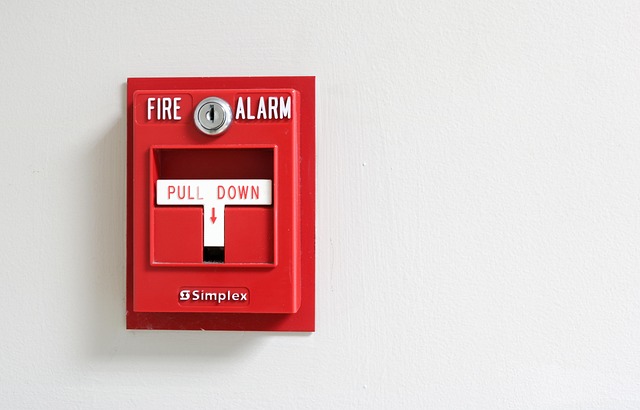
When setting up a smart home, it’s crucial to prioritize privacy and security measures alongside convenience. While smart home devices offer immense benefits for enhancing home safety, they also create new potential entry points for hackers. To safeguard your space, implement robust passwords and encryption across all devices. Update firmware regularly to patch security vulnerabilities. Consider using separate networks for smart home devices to isolate them from other internet-connected systems in your home.
For beginners venturing into smart safety, starting with essential components like secure door locks and motion sensors is a good place to begin. These devices not only allow you remote access but also provide real-time alerts when suspicious activities occur. Integrating these smart home protection tools with a reliable security system further bolsters your defenses. Remember, using smart devices effectively for home safety involves a balance between convenience and privacy—a beginners guide to smart safety should always emphasize this dual focus.
Tips for Effective Smart Home Protection for Beginners

For those new to the world of smart home devices, establishing robust security measures might seem daunting. However, getting started with smart home protection is simpler than you think. Begin by focusing on essential areas like front doors and windows, integrating smart locks that allow remote access and monitoring. These locks can send alerts to your phone when someone enters or exits, enhancing your awareness. Additionally, installing smart cameras provides a visual feed, enabling you to see who’s at your doorstep, even when you’re away.
Next, consider setting up motion sensors throughout your home, particularly in areas like hallways and rooms with valuable items. These sensors trigger alerts when unusual activity is detected, allowing you to respond promptly. Moreover, smart smoke and carbon monoxide detectors offer round-the-clock protection, ensuring your safety by alerting you to potential hazards. Regularly updating firmware and using strong passwords for all devices ensures optimal performance and maintains the security of your home network.
